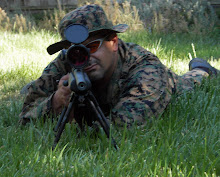So I have recently restarted my interest in Astrophotography, which had been hampered by a lack of good equipment and added too by a lack of the correct equipment (at least that is what I remembered from the previous time ;-) ).
Solving both of those wasn't easy, but now I have some good equipment and the night sky is mostly cooperating with my pursuits.
I now have a fairly "large" Celestron CPC (fairly large is contrasted against one of my dream telescopes, which are not portable... hint: the CPC still is "portable" like maybe 50 ft if your really feeling strong). I also have a Canon Rebel XTi with a T-ring and adapter (which can hold eyepieces for magnification) and a Lunar Planetary Imager (essentially a 640x480 webcam stuck in an eyepiece tube).
So now I am all set to get some awesome shots, right?
Well sort of...
Ah the challenges of life.. ISO what? Exposure time? Vibrations? Tracking / time delay? I found it funny that any photo experience that I had before with my manual 35mm, was all thrown out the window by owning these stupid "point and shoot" cameras over the past 8 years or so. I had actually forgotten how to operate a relatively simple camera (XTi isn't exactly a 5d ya' know) and manipulate it to do what I had wanted.
The robot cameras have taken over our lives!
So Astrophotography, just like many other pursuits I "enjoy" doesn't lend itself to the easy way, every thing is done manually... repeat everything is done manually. There is no "easy" button here. Now it is at this point that I remember, that it wasn't just the equipment which made me put away my astro-photo equipment before... a very strong point could be made that the lack of decent equipment made the results so poor that it wasn't worth the headache of going through all the other procedures and manual operations just to get a grainy shot of the lunar surface, or a barely discernible speck of light that I would point at and say "really, that is Jupiter".
So here is where the old story ends and the new one begins, dusting off all the "old skillz" and learning how to force my camera to do what I want it to do, as opposed to what it has trained me to do (autofocus doesn't work here, remember?) and connecting that up to some really good optics that can now display very very good detail (non-grainy) of things in our solar system and beyond (especially under good conditions)... I have found a sliver of happiness as well as encouragement in the results obtained so far, which drive me to delve deeper into this.
As I explore, I will share my learning's as well as my fruits with y'all here... hope you have as much challenge and fun as I do in whatever you pursue. If you like what you see, want to know more or want to offer advice on how to make it better, drop me a note to let me know..
Here is a URL to some moon shots taken with the new "scope" and the Rebel XTi:
http://picasaweb.google.com/sub.moa/Nov2008MoonShots#
And here is some taken with the "fancy webcam" and the new scope:
http://picasaweb.google.com/sub.moa/MoonShotsWithDigitalImager#
You should be able to see some pretty big differences in the clarity of the shots..
Until the next post...take a peek in the night sky just after sunset on Nov 30th - Dec 1st, you will see Jupiter / Venus and the Moon in all very close to each other, this is the last time that will happen again until 2052 so please take the time to check it out, it should be quite the show and maybe the first / last time we will have to see it within our lifetimes (one never knows).
May your sky's be stable and with low light pollution... :-)
Subscribe to:
Post Comments (Atom)

No comments:
Post a Comment